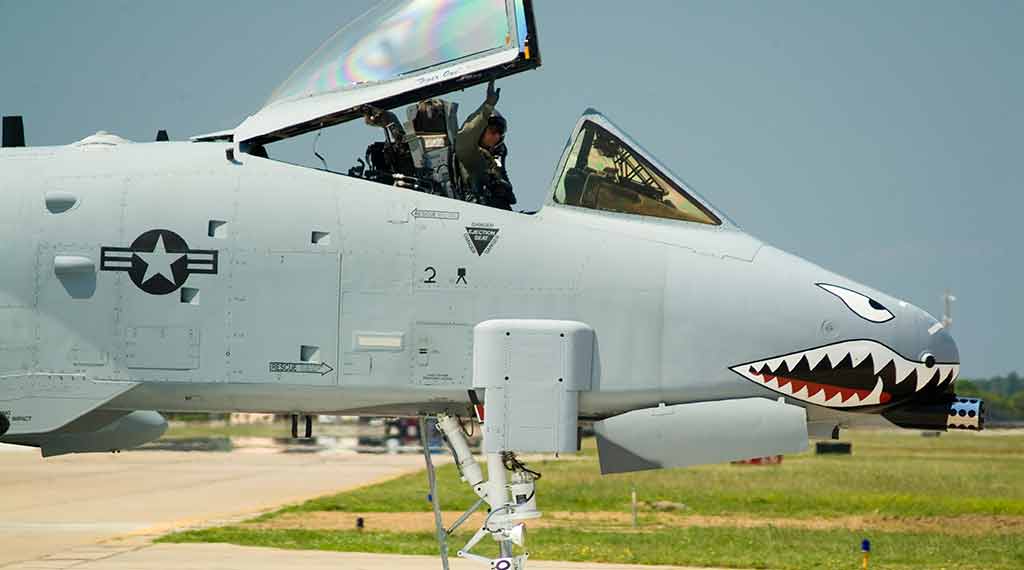US Air Force in a big lie about the A-10

While the US Air Force publicly insists it wants to get rid of the A-10 “Warthog” close air support fighters, it has just deployed a squadron to the Middle East.
The deployed fighters each can carry 16 GBU-39B small-diameter bombs (four per bomb rack). The A-10 also has an ultra-powerful 30mm GAU-8/A Avenger gun that rapidly fires depleted uranium shells that can penetrate armor.
The Pentagon has sent an A-10 squadron to the UAE. It is likely the A-10s will be moved to Iraq or possibly even Syria to be used in support of US bases, which have been repeatedly attacked by missiles and drones. When the US occasionally has responded, it has sent supersonic fighter aircraft.
The subsonic A-10 is much less expensive to operate and its gun system is far more lethal. For the most part, the A-10s will be operating in an area where the enemy has little or no air defenses outside of MANPADS. The A-10 has very good missile warning receivers and A-10 pilots can evade MANPADS when warned.
For the record, it is worth noting that US bases in Iraq and Syria have very limited air defenses and haven’t been able to counter rockets and drone attacks effectively.
The US Air Force has criticized keeping the A-10s in service, arguing that the aircraft are not survivable against modern air defenses, and has convinced the US Congress to dump the A-10s on the ground that they are not survivable.
However, the empirical evidence says that the A-10s do survive even in dense air defense environments.
In the 1991 Gulf War, the US deployed 144 A-10s. These aircraft flew an astonishing 8,077 sorties – and, on average, 95.7% of the A-10s in the fleet were available for combat at a given time. This is far better than the capability rates for other US fighter aircraft:
 Source: U.S. Air Force
Source: U.S. Air Force
The above chart is unduly optimistic about the F-35’s capability rate, which actually was running between 54-58% in 2022. The F-35 requires a lot of support and cannot operate from forward bases. The A-10 can use almost any airfield and requires only light support.
The A-10 costs about US$6,000 per hour to operate. By comparison, the F-35 costs $36,000 an hour and the F-16C around $22,514 per hour.
In the 1991 Gulf war, the A-10s destroyed 987 Iraqi tanks, 501 armored personnel carriers, 249 command posts, 96 radar installations, 72 bunkers, 1,306 trucks, 2,000 other vehicles and 53 Scud missiles and missile launchers. Around 70 A-10s were damaged but survived. Six A-10s were shot down in of over 8,000 missions.
While air defenses have improved since 1991, most of the Russian air defenses in the current war in Ukraine date back to Soviet times and are more or less the same as what Iraq had in its arsenal in 1991. The exceptions are the evolved S-300 and a single S-400 in Crimea.
Looking at the hard data proves beyond any doubt that the A-10 is both lethal and survivable in dense air defense environments.
Its low loss rate can be attributed to its unique design. While the A-10 is subsonic, its two jet engines are mounted above the wings, reducing the A-10’s heat signature as viewed from the ground. This helps protect the A-10 from ground-launched infrared homing missiles, common to most MANPADS.
In addition, the cockpit is protected by a titanium “tub” so ground fire is unlikely to harm the pilot. The fuel tanks are also foam lined, so if they are hit by gunfire or shrapnel, they won’t explode.
- Trump and Ukraine: what Russia wants, what Trump could do - November 8, 2024
- North Korean troops in Kursk could backfire on Moscow, Pyongyang - November 1, 2024
- Secure enclaves: bad CHIPS Act idea wasting billions - August 12, 2024
